Last Updated on July 25, 2025 by the Dobies Horticultural Team
You can’t beat cooking your own roast potatoes from scratch, let alone using your own homegrown potatoes. Growing your own potatoes is a rewarding process that provides a great plot to plate spud. However, knowing how, when, and which potato to grow can be pretty confusing when there are many varieties to choose from… But not anymore!
Growing your own seed potatoes down your allotment is a fun activity, but let’s get to know the difference between all the kinds and types of potatoes you can choose from at Dobies first. This will make all the difference when it comes to harvesting a bumper crop worth celebrating. A good spud is not only versatile in the kitchen for chips, mash or jackets, but we’re going to explore what type might be right for you, when to grow them and a few tips about how to cook them.
What are First Early, Second Early, Salad, Main Crop and Late-season potatoes?
There are 4 main types of potatoes available to grow. They are named according to when is best to plant them and harvest them. The 4 types are; first earlies, second earlies, maincrop and late-season.
What are First Early Potatoes?
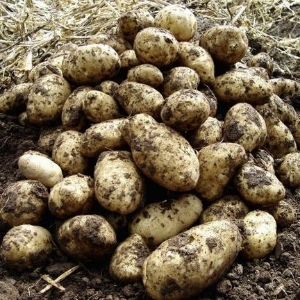
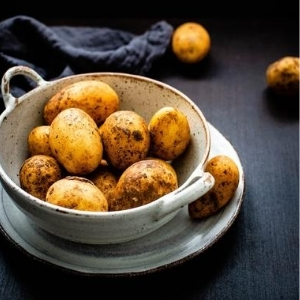

First early seed potatoes are commonly known as ‘new’ potatoes. This is because they are the very first to crop in June. Taking just 9-13 weeks to grow they are ideal for adding to summer potato salads to enjoy alongside your bbqs!
Plant between February and April and normally harvested in June and July. Producing smaller potatoes that can be used new, boiled, steamed or sauteed. These seed potatoes produce very tasty tubers that have a white waxy flesh.
Plant at a depth of 10cm with at least 25-30cm between each potato and 45cm left between each row to give the potato plants enough room to grow and expand. Open flowers (if present) will indicate when the first tubers are present. This should be within 9 to 12 weeks after planting. Potatoes can then be harvested for immediate use as required or left for 2 to 3 weeks until required. Harvest as you need them!
Your early potatoes will be most tasty when they are initially harvested, cooked and prepared all within a few hours. This can only be done if you grow them yourself!
First Early Potatoes dispatch from December.
What are Second Early Potatoes?
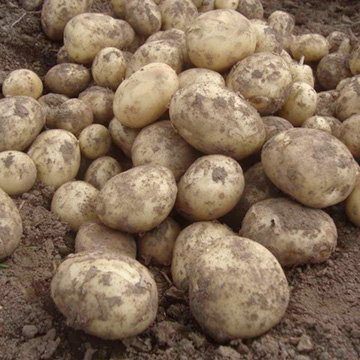
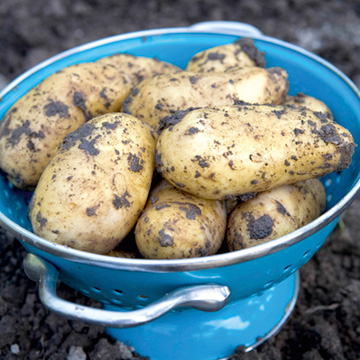
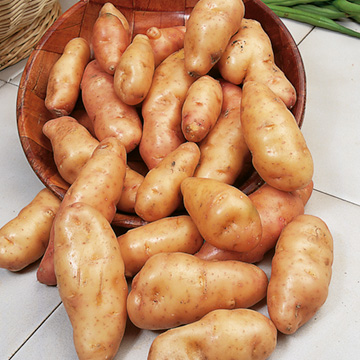
Second early seed potatoes are also called ‘new’ potatoes as they only take a few weeks longer to mature than first earlies. Taking between 14- 16 weeks to grow, second early potatoes are planted between March and April and normally harvested June to September, just after first early potatoes.
Second early seed potatoes need to be planted at a depth of 10cm with at least 30cm between each potato. There needs to be at least 45cm left between each row to give the potato plants enough room to grow and expand.
Just like first early potatoes, second earlies can be used as new potatoes, boiled, steamed or sauteed to create delicious potato dishes.
Second Early Potatoes dispatch from December.
What are Salad Potatoes?
All great salads should include some kind of salad potato. Whether that is a homegrown, homemade potato salad or new potatoes that have been freshly steamed and added to your favourite salad veg.
Salad type seed potatoes are typically second early potatoes. Planted between March and early May at a depth of 10cm with 30cm between each potato. There needs to be at least 45cm left between each row to give the potato plants enough room to grow!
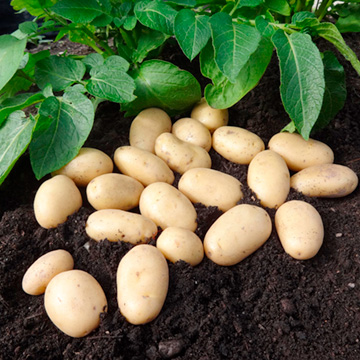
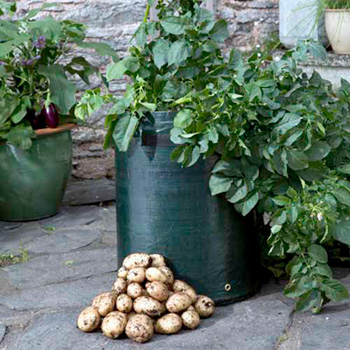

It says it in the name, you can add these potatoes to salads to spruce them up or create a creamy potato salad to bring to the table at bbq’s and picnics.
Salad Potatoes dispatch from December.
Ideal for first-time potato growers, they take up less room and as they are harvested earlier than others, they are less prone to potato blight.
What are Maincrop Potatoes?
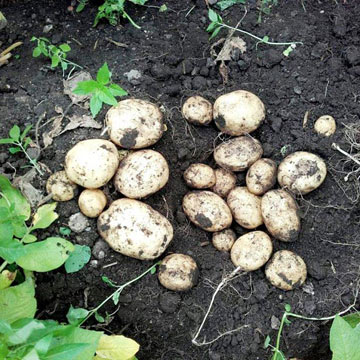
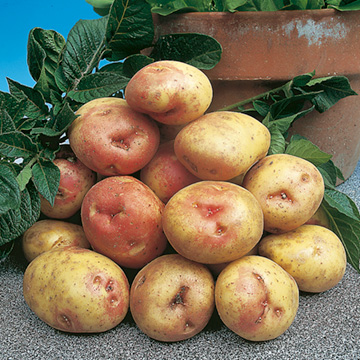

Maincrop seed potatoes take longer to grow than first early and second early potatoes. Planted between March and early May, ready for harvesting between the end of August and October. They take roughly 16- 22 weeks to mature. Therefore, if you’re in no rush to wait for big yields of delicious homegrown potatoes, maincrop are for you.
They need to be planted at a depth of 10cm with 40cm between each potato. There needs to be at least 70 to 75 cm between each row to give the seed potatoes enough space to grow. Open flowers (if present) will indicate when the first tubers are present. This should take around 14 weeks after planting. The potatoes should then be left for 4 to 8 weeks to allow the skin to harden so that they are able to store better.
Maincrop potatoes produce tubers that are extremely versatile. They taste delicious mashed, boiled, steamed, roasted and baked. Or you can make your own homecooked chips with maincrop potatoes.
Main Crop Potatoes dispatch from December.
What are Late Season Potatoes?
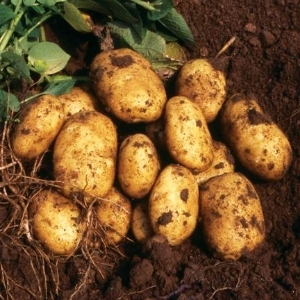

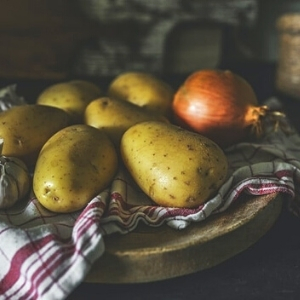
Late season seed potatoes are commonly known as second cropping potatoes and are grown for winter consumption. If you choose to grow these late season potatoes, you’ll be able to enjoy these from October all the way to Christmas Day!
Grown from tubers that have been stored in a precise temperature controlled room, keeping them dormant until they are ready to be planted between June and late July. Plant them as soon as they arrive so they can benefit from warm Summer soil where they grow rapidly. Ready to harvest in October, make sure to protect from frost and leave some in the ground until Christmas Day where you can harvest and cook them completely fresh on the day.
Late Season Potatoes dispatch from June.
Are Potatoes Good For You?
- Boiled potatoes have the second-highest concentration of folic acid after bread. Baked in its skin, an average sized spud contains over 30% of the Recommended Daily Allowance.
- Potatoes contain no cholesterol.
- Potatoes provide approx 15% of Britain’s Vitamin C intake. Rice and pasta provide none whatsoever.
- Potatoes are 72-75% water, 16-20% carbohydrate, 2-2.5% protein, 0.15% fatty acids, 1-1.8% dietary fibre.
- Potatoes actually top bananas in potassium content: a medium banana contains roughly 450 mg, while a medium baked potato or 20 French fries contains 750 mg.
- One medium potato supplies, on average, 30 mg vitamin C, nearly as much as in a glass of tomato juice and 1.5 mg iron, which is around the same amount as in an egg.
These aren’t even all the nutritional facts on our class potato spuds! They are well worth the grow and a valuable journey from plot to plate. There’s no time to waste on growing, cooking and enjoying your very own delicious and nutritious potatoes.
Browse our latest blog posts to keep up to date with our offers, new ranges and giveaways!



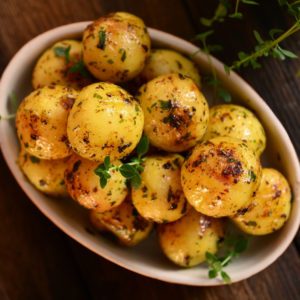
Very upset. None of the seeded potatoes I bought from you produced anything. Plenty of lush greenery, but no potatoes.
Hi Jilly, we are sorry to hear about your potato crop – please email our customer care team, who should be able to assist you: info@dobies.co.uk